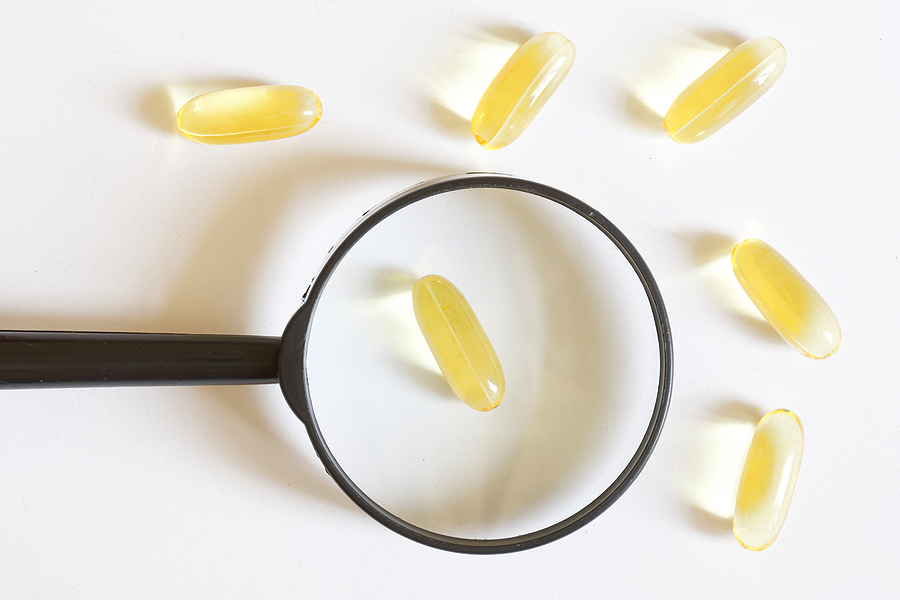Updated 06/02/2021
Vitamin D testing isn’t always a part of standard blood work at an annual physical, but Vitamin D deficiency is such a widespread problem that I believe it should be! When women come to see me, I like to have as much information as possible so I can give them the best treatment plan for their unique circumstances.
Still, I find that women have a lot of questions about when and why Vitamin D testing should be done, as well as questions about what their levels should be, and what to do if they are, indeed, deficient.
In this article, I’ll answer some of the most common questions I hear, and give some guidance about maintaining ideal levels and how often retesting should occur.
How Do I Know If I Need Vitamin D Testing?
As I said before, I believe that everyone can benefit from knowing what their Vitamin D levels are, since there are so many health problems that can result from a deficiency, including muscle pain, weakened bones, fatigue, depression and sleep problems. Supplementation with D3 is the easiest, most effective course of action if levels are not optimal. At the same time, I recognize that, for whatever reason, not everyone will choose to get tested.
There are specific risk factors and health concerns that can indicate a deficiency, so people who have or are at higher risk of these should seriously consider getting their vitamin D levels tested. These factors and concerns include:
- Family history or personal history of cancer
- Hypertension (high blood pressure)
- Schizophrenia
- Depression
- Migraines
- Epilepsy
- Osteoarthritis
- Autoimmune conditions (such as lupus, ankylosing spondylitis, multiple sclerosis, rheumatoid arthritis)
- PCOS (polycystic ovarian syndrome)
- Diabetes mellitus (both types 1 and 2)
- Fibromyalgia
- Osteoporosis/osteopenia
In addition, anyone who experiences the following symptoms should also consider testing:
- Musculoskeletal pain, including joint pain and low back pain
- Muscle weakness
- Poor balance
- Systemic inflammation
What if I decide not to get tested?
My article, “Is Vitamin D Deficiency Casting A Cloud Over Your Health?,” details a wealth of health benefits to be enjoyed when we are vitamin D replete. One way to intentionally get there is through periodic testing and vitamin D supplementation. But if you choose not to get tested, all the benefits of the sunshine vitamin are still available to you. You have two options:
Natural vitamin D production. Nature itself provides one of the best ways to boost your vitamin D levels: through limited exposure of your skin to the sun. Without sunblock, your skin can manufacture on average 10,000–15,000 IU vitamin D in a single “pinking” exposure. But this route has its limitations, too.
If your skin is very, very light; if you are at risk of or have a history of melanoma; or if you’re fearful of sun exposure for any reason, this is not a viable option for you. In addition, sun exposure doesn’t work equally well for everyone. It’s a given that the darker your skin, the more melanin pigment it contains, and the more prolonged sunshine exposure you will need to produce adequate vitamin D. It’s also important to note sunblock with an SPF of 15 or higher will block 100% of vitamin D production.
What’s more, our inborn ability to manufacture vitamin D from sun exposure tends to decrease as we age, and it’s been found that many elderly folks do not manufacture vitamin D at all well. This is because as we age, the thickness of our skin decreases linearly, along with the amount of the cholesterol-related precursor to the vitamin D molecule present in the skin. It has also been found that people who are obese do not as readily generate vitamin D in the skin.
Oral vitamin D supplements. Luckily, almost anyone can benefit from taking oral vitamin D3. If you are among those at higher risk of vitamin D deficiency and you decide not to have testing, we suggest you take 2000 IU oral vitamin D3 supplementation daily. If after 6 weeks you’re not feeling better, you may very well need more to achieve optimal levels. In this case you will need testing and follow-up with a qualified healthcare practitioner to safely achieve optimal levels.
Marcellepick.com has formulated our own high-quality vitamin D supplement to enhance your health – click here to find out more.
The populations below have a higher risk of vitamin D deficiency:
- Those who live above 35–40° latitude — you may only get enough radiation from the sun between May and October in the Northern Hemisphere, and between October and May in the Southern Hemisphere. (Visit the World Atlas website to check out your latitude!)
- Those who do not get out in the sun regularly, those who avoid it altogether, and those who use SPF 15 or higher sunblock
- Dark-skinned people
- Elderly people
- Overweight/obese people
- Teens
What specific test should I request from my healthcare provider?
You want to ask for the test that measures the circulating form of vitamin D – this is referred to as 25[OH]D, or 25-hydroxyvitamin D.
Do I need to schedule my vitamin D test at a certain time, or together with other tests?
These are great questions, and the answer is yes, timing can matter – and there is another test that should be done at the same time. Vitamin D testing is best done:
- At any time when you have not been exposed to UVB light for ~6 weeks, as in late fall through late spring or summer
- After discontinuing vitamin D supplement use for at least 3 days
- When you have been fasting for at least 4 hours
- Together with a test for serum calcium levels (an indicator for toxicity)
What levels are optimal when I get my vitamin D tested?
Most labs here in the US currently have a reference range of 20–100 ng/mL. But as you can see from the list below, I use a much narrower range at marcellepick.com! That’s because I’ve seen so many women who are told their levels are “normal” who have begun to thrive after supplementation.
Vitamin D levels — what’s really optimal?
>100 ng/mL Excessive vitamin D (see note on toxicity)
50–70 ng/mL Proposed optimal range
30–50 ng/mL Suboptimal
<30 ng/mL Deficient
<20 ng/mL Overt vitamin D deficiency
<10 ng/mL Seriously deficient
Many testing labs are currently reporting a twofold to threefold increase in the number of vitamin D tests being ordered.
The reality is that you will not be deriving all the benefits of vitamin D unless your levels are quite a bit higher than the accepted “norm”. When reviewing the results of a blood test with your practitioner, it might help if you explain that your goal is to reach into the higher end of the conventional reference range. The mean value in the US is between 25 and 30 ng/mL, so most people here have values that are well below optimal.
Despite the “normal” reference range of 20–100 ng/mL, the latest scientific research shows the optimal range for health maintenance is 50–70 ng/mL. At these higher levels numerous health benefits can be gained — better bone strength, mood, energy, hormone performance, inflammation reduction, cancer prevention, and more! (Visit the GrassrootsHealth website to download a chart showing levels needed to provide preventive and healing benefits.)
For healing more serious medical conditions, some research is showing you may need to keep your vitamin D level even higher. If you have a serious medical condition, such as cancer, I urge you to work with a functional medicine practitioner to reach and maintain the levels most helpful for you as an individual.
How much does a vitamin D test cost?
I wish there was a simple answer to this question, but the reality is that today in the US, the cost of vitamin D testing can vary significantly. It might cost you nothing, a minimal $25, or it might run more than $250. Be sure to ask your healthcare provider about costs when you ask for testing.
There are a number of reasons for this variability. First, the cost can be higher if the lab where you get your test drawn does not perform vitamin D testing in-house, and has to send your sample out. Costs are also higher at labs that have not automated their vitamin D testing technology. In either case, testing can be labor-intensive and thus more expensive.
If cost is a consideration for you, one option is to ask your healthcare provider if she or he would be willing to negotiate with a lab for lower-cost “volume” testing for their patients (including you). Not only will you benefit from this, but it could encourage your practitioner to test more patients who are at risk of vitamin D deficiency, and those patients, too, will be better able to afford the testing for this widespread nutrient deficiency.
Insurance carriers and policies can vary widely in coverage for the test as well. If you have health insurance, you can check with your health insurance representative for policy specifics.
Online labs that perform vitamin D testing are another alternative that work for some people, particularly people without insurance or where the policy coverage is limited. Here’s roughly how this works: you pay online; they ship you the kit; you bring the kit to your healthcare practitioner and have the sample drawn in their office; then you forward the sample to the online lab. Results can be copied to both you and your provider, and you can work with your provider from there for interpretation and follow-up. If you use an online kit, just make sure you’re working with a credible lab — credentials may be easier to validate if the lab is based in the US.
Is testing worth it? What do I get in return for my investment?
I believe that testing is absolutely worth it. Put simply, testing will inform you and your healthcare provider on the status of your serum 25-hydroxyvitamin D levels.
But more importantly, that information is invaluable for determining your next step: what to do to get your vitamin D up to optimal levels. Using very conservative estimates, some 25% of adults in the US are deficient. That means the health of at least 12 million people could be profoundly enhanced on the basis of this simple test, together with easy, safe, affordable vitamin D supplementation. Doesn’t that make sense?
Recall that optimal vitamin D levels will give you optimal calcium absorption, put the brakes on bone-breakdown, reduce blood pressure, decrease risk of various cancers, slow the progression of inflammatory factors like CRP and inflammatory conditions such as osteoarthritis and diabetes, and reduce incidence of autoimmune illness. And that’s just a start. We hope this information helps you carefully entertain the value of testing!
How do I know how much vitamin D to take to get replete?
How much supplemental vitamin D3 you should take depends on how much you already have in your blood. And the amount that your body needs to raise your levels differs from person to person.
My general recommendation is 1000–2000 IU/day unless you are working with a qualified functional medicine practitioner or nutritionist with regular testing in follow-up. If you are deficient, more than this will likely be necessary, but any supplementation above and beyond 2000 IU daily should only be done in conjunction with periodic testing and under the watchful guidance of a qualified healthcare professional. Again, if you have a serious medical problem, testing and regular follow-up will be needed.
Should I be worried about vitamin D toxicity? How can I prevent vitamin D toxicity?
For most otherwise healthy people who choose not to test for vitamin D levels, it’s generally okay to supplement with 2000 IU vitamin D3 (cholecalciferol) daily, at least between the fall through the spring months. Even in the summertime, 2000 IU per day should be fine if you do not get unprotected sun exposure.
However, you should be aware that there are some precautions regarding vitamin D supplementation. If you have any health condition that predisposes you to high calcium in the blood (hypercalcemia), you should not take vitamin D except under the watchful care of a healthcare provider. These conditions include but are not limited to:
- Hyperparathyroidism
- Granulomatous disease
- Sarcoidosis
- Lyme disease
- Lymphoma
- Kidney disease
Anyone taking the diuretic known as hydrochlorothiazide (HCTZ), a “water pill” drug used to treat high blood pressure and fluid retention caused by a range of conditions, including heart disease, should also not take vitamin D supplements.
What are the symptoms of vitamin D toxicity? Can someone be just hypersensitive to vitamin D?
Rarely, an individual may ingest too much vitamin D, which puts them at risk for a reaction from vitamin D hypersensitivity or toxicity. But most people with vitamin D toxicity do not experience symptoms — which is why I do not recommend using more than 2000 IU per day without regular testing and follow-up.
Dizziness may be a symptom of hypersensitivity, and signs of toxicity may include serious stomach upset, vomiting and excessive thirst. If a woman has any concerns or suspected reactions she should stop use immediately and contact a doctor.
The symptoms of too much vitamin D (hypervitaminosis D) are connected with the consequences of having too much calcium in the blood (hypercalcemia). This occurs once the kidneys’ ability to eliminate calcium is exceeded.
Note that this is not a common problem — thankfully, vitamin D toxicity is rare. Most healthy people would have to take a great deal of oral vitamin D before they would reach toxic levels. Here is a list of the clinical manifestations of vitamin D toxicity:
- Anorexia
- Weight loss
- Weakness
- Fatigue
- Disorientation
- Vomiting
- Constipation
At my clinic, whenever I prescribe more than 2000 IU vitamin D daily for a patient, I also prescribe regular retesting, and typically request that their blood calcium levels be checked at the same time, just so there is no question of toxicity.
What about retesting? Do I need it?
This will depend on your medical or health condition, how much vitamin D supplementation you are taking, and whether you are being prescribed vitamin D therapeutically. If you are found to be deficient and/or you are supplementing at doses higher than 2000 IU daily, I recommend retesting within 6 weeks to 2 months after initiating supplementation.
Once you attain vitamin D repletion, there are some simple things you can do to help keep your levels optimal.
How can I maintain my vitamin D levels once I get them up to where I want to be?
That’s a wonderful question! The answer will vary, according to your age, skin tone, where you live (latitude), the seasons, and your lifestyle (indoors or outdoors, sunscreen protection, and other aspects of the way you live). It will also depend on other risk factors for vitamin D deficiency, and you may want to modify accordingly. Again, the best way to know is to get tested periodically! Here’s what we do in Maine, where the UVB rays are only strong enough (290–315 nm) between May and September to convert the precursor molecule in the skin to provitamin D3.
For maintenance after boosting and ideal range is fully achieved:
- Fall/winter months – 2000 IU vitamin D3 daily after ideal level is reached.
- Spring/summer months – 1000 IU vitamin D3 daily, with 15–30 minutes of daily sun exposure to limbs without sunscreen at safe-sun times of day (avoiding 11:00 am – 2:00 pm), then regular retesting again in the mid to late fall.
Maintenance retesting notions to consider after reaching ideal range:
- For those initially found deficient – retesting at least every 6 months
- For those initially found insufficient – retesting at least annually
- For those initially found not ideal – retest with fasting lipid profiles every one to two years







